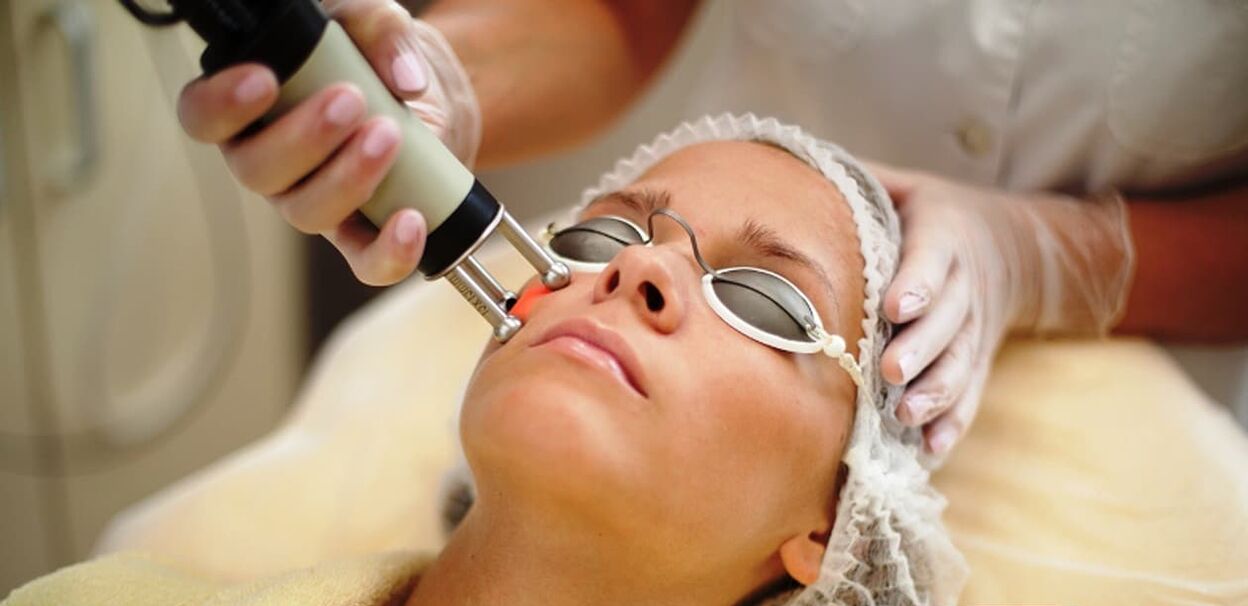In modern cosmetology, there are more and more non-surgical procedures, the effect of which is comparable to plastic surgery, for example, with a circular lift.
The advantages of non-surgical procedures are evident: less trauma to the skin, less risk of complications, shorter rehabilitation period and more humane cost.
One of these highly effective procedures is laser skin resurfacing. However, there are many myths associated with it.
Let's find out how laser resurfacing works, to whom it is indicated and to whom it is not, what risks the procedure entails.
What is the essence of laser skin resurfacing?
As you know, our skin is constantly updated. In the depths of the dermis, new cells are born that progressively move towards the surface of the skin, and the old cells die and are shed.
This is exactly what happens when you are young. And the body also synthesizes a sufficient amount of collagen and hyaluronic acid, so that young skin is dense, elastic and moisturized.
Over time, processes get out of sync. The growth of young cells slows down, dead cells exfoliate poorly, the destruction of collagen and elastin begins to prevail over the synthesis, and hyaluronic acid is not produced in sufficient quantity. The skin becomes thinner, it sags, wrinkles appear on it, the complexion worsens, post-acne scars may also appear, unwanted pigmentation due to sun exposure.
In simple terms, laser beam treatment burns off the top layer of skin cells. In reality, of course, everything is more complicated: the specialist who performs the procedure must be highly qualified to control the depth of skin damage.
Thus, we get two effects:
- The old dead cells are destroyed and the small wrinkles, ripples, post-acne, scars, scars disappear with them. The complexion becomes clean and fresh.
- In response to damage, the body mobilizes and begins to produce collagen and hyaluronic acid at an accelerated rate, as a result of which the skin thickens, acquires tone and, consequently, a lifting effect occurs, the facial oval is tense. In fact, the skin receives a boost of self-rejuvenation.
Does it hurt to do laser procedures and what is the rehabilitation period?
The type of laser and the number of procedures per course is determined by the specialist. Procedures are carried out in a course every 5-7 days.
Laser treatment is performed under local anesthesia. Then special care and protection from the sun is needed for some time.

Already after the first session of the day after three, the first results will be felt: the skin will be tightened, enlarged pores, wrinkles and other minor defects will disappear.
Rehabilitation of the skin after laser can be delayed in women who smoke, as well as with a lack of zinc and vitamins. Consult with your esthetician: it may make sense to take a multivitamin before the procedure and during the rehabilitation period.
How long does the effect of laser skin rejuvenation last?
Usually, the rejuvenation effect lasts about 5 years, which is a long time for a non-surgical procedure.
Indications and contraindications of laser resurfacing
There is a misconception that laser treatments are only for aging skin.
In fact, they adapt perfectly to age-related changes. However, they can be carried out from the age of 18, for example, to eliminate early facial wrinkles, which can appear from the age of 20-25, as well as scars, even post-acne scars.
There are also contraindications for procedures:
- under 18 years of age and over 60 years of age;
- diabetes;
- hypertonic disease;
- River crab;
- benign tumors;
- vitiligo;
- cardiovascular diseases;
- any acute illness;
- infections;
- the pregnancy;
- breast-feeding.
The belief that lasers thin the skin is a common myth. On the contrary, the active synthesis of collagen in the long term tightens the skin, although during the rehabilitation period an increase in the sensitivity of the skin can be felt.
Laser resurfacing is a modern and highly effective non-surgical rejuvenation technique that allows you to get rid of age-related changes and other skin defects in a short time.






















